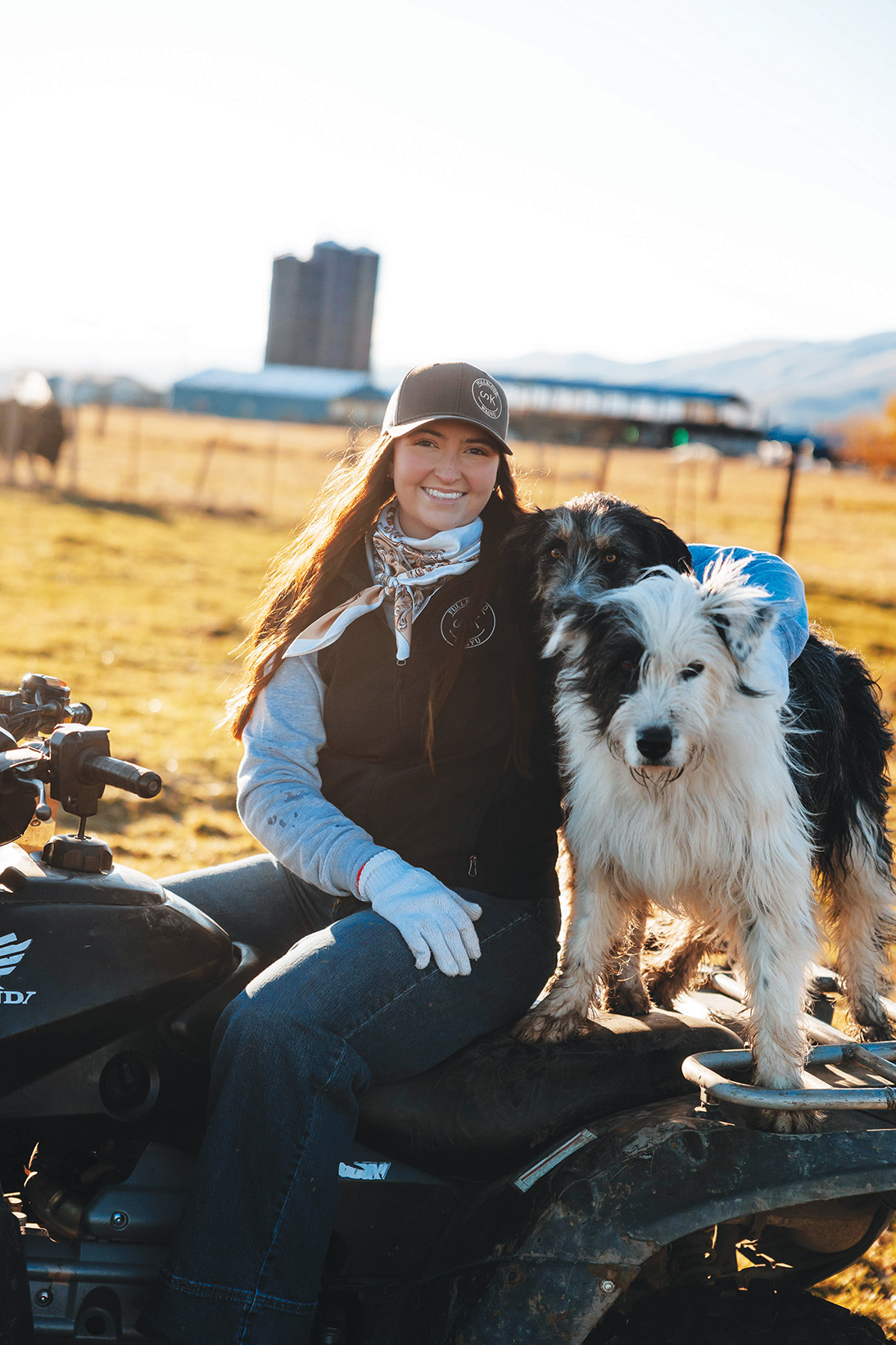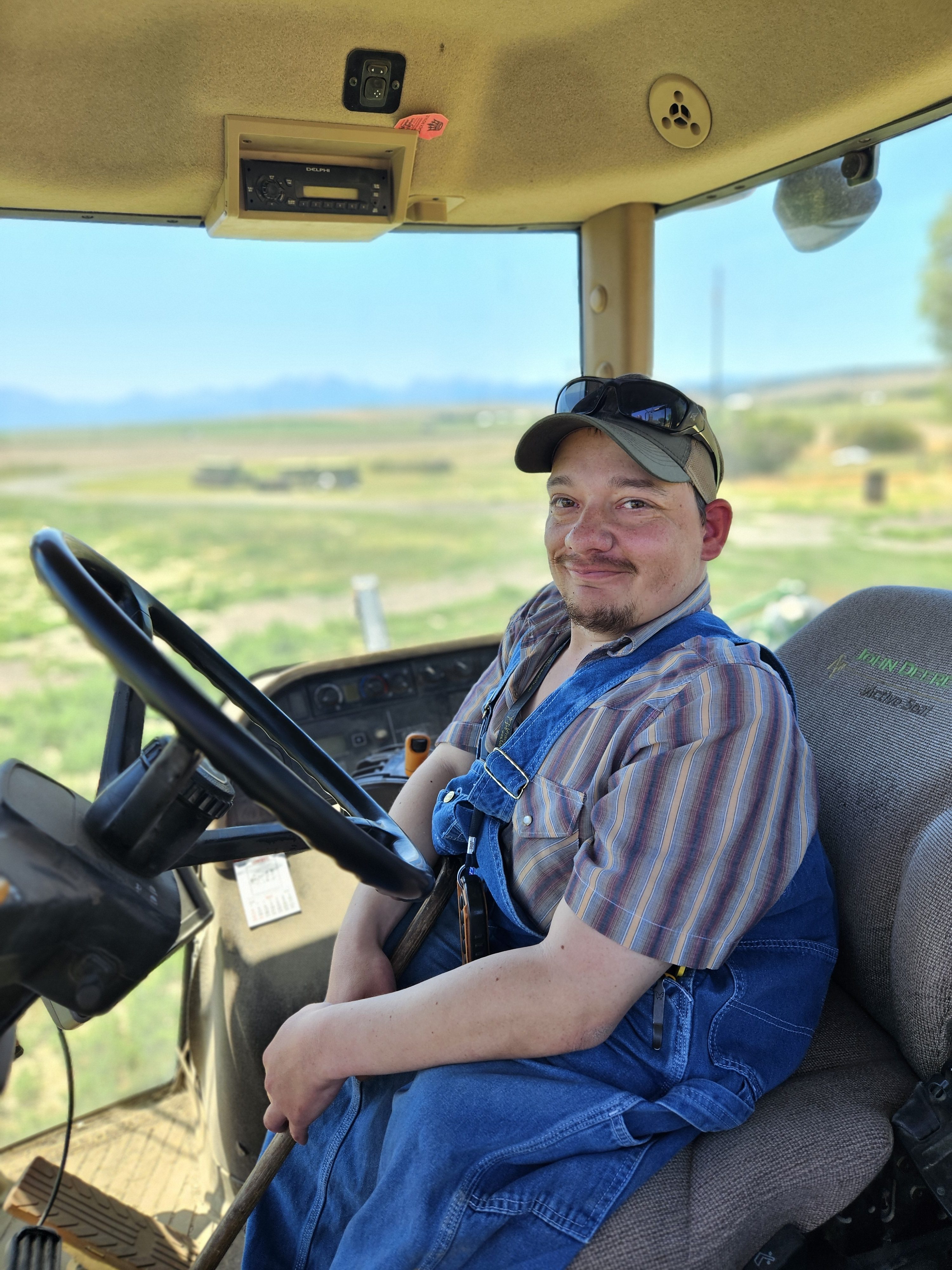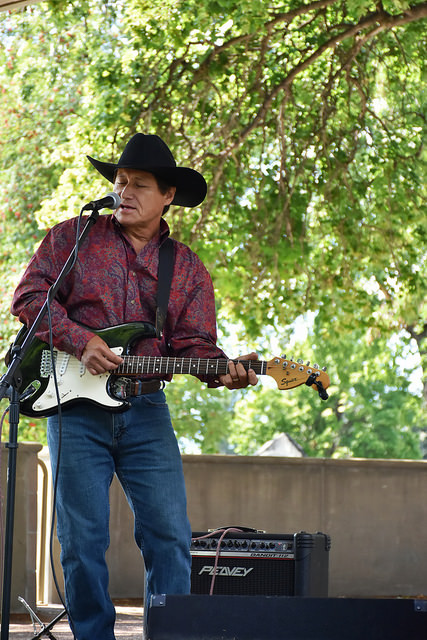Out and about: Finding century-old graffiti on volcanic rock during a desert hike
Published 7:00 pm Thursday, December 28, 2023

- Jacoby
I didn’t expect to find 101-year-old graffiti in the sagebrush country east of Baker City. Although given the vintage, and the style, I suppose petroglyphs might be the more apt term for what my wife, Lisa, and I saw during a hike on a Christmas Eve that was bright but brisk, owing to a persistent wind out of the southeast and a temperature around freezing.
Trending
I just wanted to have a look at the shallow caves in the rimrock above Bulldozer Creek.
The site is on public land about 14 miles east of Baker City.
Lisa and I walked up the creek’s bed — dry, as it almost always is — for about a mile and a half.
Trending
The topography is nondescript.
Seen from a distance, such as Highway 86 a few miles to the north, the land appears to be a nearly featureless plain, interrupted by an occasional pimple-like butte that even a careful cartographer wouldn’t bother to name.
But the reality is rather different.
The country lacks the dramatic upheavals of the Wallowas or Elkhorns, for sure, and there is nothing like the chasm of Hells Canyon.
From the vantage point of a pedestrian, however, the land is much more compelling than it seems from a distance and at highway speed.
Bulldozer Creek — I have made inquiries but as yet haven’t dug up a compelling source for its name — makes for an intriguing hike.
Its bed is several feet wide in most places and gratifyingly smooth. It would be a fun mountain bike ride, too, with only an occasionally rocky stretch to navigate where boulders have tumbled from the bank or washed into the channel from a tributary draw during a past gullywasher.
Although we hiked upstream, the grade is so modest that we scarcely noticed we were gaining elevation.
After a mile or so I saw, on the west side of the creek and perhaps a mile ahead, an outcropping of rimrock. I figured we could climb the slope there, scramble through a notch in the rocks and intercept a two-track road that straddles the ridge, making possible a loop hike (I detest backtracking).
As we came closer I could see that the rimrock was riddled with fissures that looked deep enough to be called caves.
The nearer we walked the more interesting the formation appeared.
So far as I can tell from a geologic map I consulted, the rimrock is basalt that lies atop a layer of welded tuff, a type of rock formed from superheated volcanic ash.
This combination comports with what I, with a rudimentary knowledge of geology, could discern when I looked at the rock layers.
Basalt is typically much stouter stuff than welded tuff.
The latter is softer and thus more easily eroded by wind and water, which would explain the fissures and grottoes Lisa and I explored, overlaid by comparatively intact basalt. The dramatic spires and columns at Leslie Gulch, in the Owyhee country of Malheur County, are made from a similar type of consolidated ash.
I’m no more a biologist than I am a geologist, but it was obvious, from the copious scat lying about, that packrats have colonized the place.
I can understand the lure, though I try to avoid habits common to small rodents (or large rodents, come to that). Erosion has created a labyrinth of fissures and niches ideal for these vulnerable animals, offering shelter from the weather and from predators both skyward (hawks, eagles) and earthbound (badgers, coyotes).
Making their mark
While exploring these nooks and crannies I noticed something that even the most clever packrat can’t manage.
Letters and numbers, etched into a protruding chunk of tuff, perhaps with a chisel or the blade of a stout knife.
I could make out what I took for a name — “Orvel,” and below, what looked like it might be a last name, “Young.”
Carved below the names is a year, “1922.”
Lisa saw other markings nearby.
The name “Newton Young” is clearly etched, as is a year, “1929.”
Also, below Newton Young, what appears to be another name, “Fain.”
Besides these human artifacts, we marveled at a few spots where nature has gouged holes in the stone. One of these “windows” affords a direct view of Krag Peak, the distinctive mountain, with its twin triangular summit pinnacles, near East Eagle Creek in the Wallowas.
I was reminded of Dee Wright Observatory, the unique monument made of basalt lava atop the McKenzie Pass in the Cascades west of Sisters. The observatory includes a series of windows, each framing a Cascade volcano.
As we hiked the ridge road back to our rig, parked a couple miles north of Highway 86, I pondered those etched names and years.
I wondered, as I always do when I come across signs of human activity of such vintage, about the people, long in their graves, who left such a lasting legacy in the vastly more ancient stone.
Who were Orvel and Newton and, possibly, Fain?
And what brought them to that remote spot, where more than a century later their handiwork is, if anything, even more distinct as erosion deepens the digits?
Were they rounding up cattle on an afternoon in autumn?
Or, in common with Lisa and I, were they merely out for a walk, their eyes drawn by the fanciful sculptures in the rimrock above?
Like as not I’ll never be able to answer any of those questions.
But a few days later I did learn something about the people who I suspect stood in the same spots that I did.
Climbing a family tree
The Church of Jesus Christ of Latter-day Saints’ FamilySearch website is a genealogical treasure.
And unlike most treasures, this one is free.
The website, which accomplishes in a few minutes what likely would have taken a researcher days or weeks in the pre-internet era, yielded some intriguing results.
It appears that at least a couple members of the Young family, which emigrated to Baker County from Illinois, contributed to the etchings.
FamilySearch turned up Orvel Newton Young. He was born on Sept. 18, 1892, at New Bridge, the unincorporated town along Eagle Creek about 3 miles north of Richland.
There was only one written record associated with Orvel — a draft registration dated June 5, 1917, when he was 24. Congress had declared war on Germany just two months earlier, embroiling America in the Great War, which had over the previous nearly three years transformed parts of France and Belgium into a slaughterhouse.
Orvel’s father was Albert Newton Young, who died in Baker in 1954 at age 85 and is buried, along with his wife, Laura, who died in 1962, at Mount Hope Cemetery.
Albert had a brother, Peter Fain Young, who was Orvel’s uncle. Peter’s sons included Newton Franklin Young, born in 1906, and Fain Lyle Young, born in 1910. Newton and Fain, both born in Baker County, were Orvel’s younger cousins.
Orvel died in 1946 at Solano, California, at age 54.
Newton died in 1987 at Juneau, Alaska. He was 81.
Fain died in 1973, age 63, at Finley, Washington, near Kennewick.
None of this can satisfy my curiosity, of course, about the circumstances when Orvel, in 1922, and Newton and Fain, in 1929, might have affixed their names to that stony spur.
Did they appreciate the shelter the caves offered against a biting winter wind, as Lisa and I did?
Or did they relish instead the shade on a stifling summer day?
I can’t know, but it is no matter.
It is enough, I think, to ponder such things while walking among the sage, to consider the great weight of history, both on the accessible scale of humans and the almost inconceivable span of the planet.
Still waiting on winter
Our hike was one of four we took during the Christmas weekend, and in each case snow was conspicuous by its scarcity.
On Dec. 22 and on Christmas Eve and Christmas Day, we walked in the desert lands east of Baker City, where scanty snow isn’t so unusual even as the year wanes.
But the scene was much more jarring on Dec. 23, when we strapped on snowshoes for the first time this season near Deer Creek, on the west slopes of the Elkhorn Mountains north of Sumpter Valley.
We hardly needed to bother with the artificial footwear.
The snow was of modest depth — perhaps 6 inches in the most sheltered spots. After a spell of mostly dry weather the previous two weeks, with temperatures rising above freezing during the day and dipping below at night, an icy crust had formed on the snow so firm that even without snowshoes our boots sunk in just a couple inches.
But having tossed our snowshoes in the rig, I figured we might as well use them.
Our route included a stretch along a ridge that parallels Deer Creek. This ridge, unique among those on the west side of the Elkhorns, runs parallel rather than perpendicular to the main spine of the mountains — roughly east-west.
That means one side of the ridge faces due south, and thus gets a fair amount of sun exposure even around the winter solstice.
Although snow still lingered in shady spots, there were so many patches of bare ground that Lisa and I quickly tired of our plastic snowshoes clanking on rocks and scuffing logs and limbs. We shucked the shoes, even though we both dislike lugging the things around.
Despite the snow it didn’t seem much like Christmas.
The elevation on the ridge is modest, just a shade over 5,000 feet at its apex.
But most years there’s quite a lot more snow by Dec. 23.
We’ve snowshoed in the area several times, and each time we parked at a cattle guard along the Deer Creek Road, the spot where the snowmobile groomer starts.
The day before, while hiking near Boulder Creek east of Virtue Flat, Lisa spotted something I likely would have dismissed as folly if I didn’t see it — a patch of phlox with two blossoms that appeared to have recently bloomed, something that more typically happens in May rather than late December.
We noticed, too, that cheatgrass, spurred by rain earlier in the autumn and then by mild weather later in the season, had progressed from the pale green of new growth to the distinctive purple as the annual grass moves through the abbreviated cycles that gives it an edge, during spring, over native bunchgrasses.
Meteorologists have predicted El Nino conditions this winter, which typically results in warmer, drier weather than is typical.
It is, fortunately, still quite early in the snowpack season. The bulk of the winter snow, which is so vital to refilling reservoirs and supplying irrigation water to farms and ranches around the region, usually arrives from January through April. Some years — 2023 being a proximate example — snow continues at higher elevations well into May.
But with wildflowers blooming — well, one flower, anyway — and bare ground in the mountains a few days before Christmas, we’ll need a dramatic shift in the weather pattern to maintain the momentum from last winter and spring, which banished the drought from parts of Northeast Oregon and reduced its severity in others.









